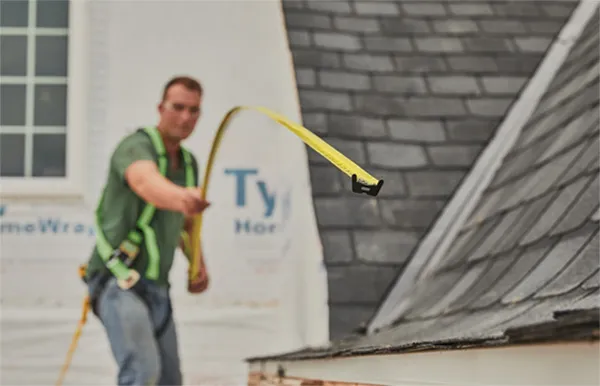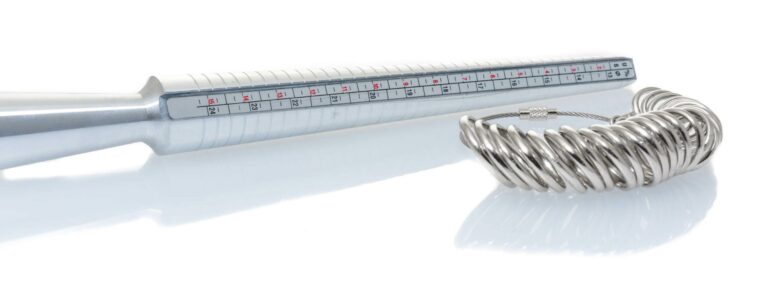Measuring Tape
The humble measuring tape found in every toolbox, sewing pouch, and at every building site on earth is actually a device with much deeper meaning. Although simple in comparison to the newer digital tools available, it has proved its worth to industries in both building construction and tailoring. The tape measure is much more than a piece of material with markings on it.
More importantly, it has been instrumental in shaping human progress as a precision instrument that affords the means for accuracy, standardisation, and innovation in disparate fields.
A Brief History of Measuring Tapes tools:
Measurement has been an essential element of human civilization since early history. The early systems of measurement were derived from body parts of humans: the foot, the cubit-which was the length of a forearm-and the span, or the distance between the thumb and the little finger. These, unfortunately, varied greatly and depended far too much on circumstance.
The first real “measuring tapes” probably came about during the Roman Empire. These really early tapes were made out of leather or other natural materials that would carry markings denoting units of measure. However, they were not regulated, as in different regions or at the hands of different individuals, various systems of measurement were in use.
The modern tape measure, as we presently know and use, was originally invented by a British inventor named James Chesterman, who patented a metallic tape measure in 1829. Chesterman’s coiled steel tape in compact form was more durable and portable than earlier forms. With improvement in the quality of materials used, accuracy, and methods of production, this product became quite indispensable in both professional and domestic environments.
The Anatomy of a Measuring Tape:
At the core, the base constituting material of a tape measure is a flexible ribbon, strip, or coil that is graduated in measurement units. Materials used in the manufacturing processes of tape measures include cloth, plastic, fibreglass, and even steel. Each of these materials is selected for specific qualities such as flexibility and strength; resisting stretching and wearing out ensures correct and continued measurements over time.
A standard measuring tape would contain:
1. Graduated markings:
in inches, feet, centimetres, or metres, depending on the region or purpose to which the tape is being put. Some tapes have dual markings-one with imperial units, that is, inches and feet, while the other side will be marked with metric units of centimetres and metres.
2. Blade:
This is the strip or ribbon containing the graduated markings. In steel measuring tapes, the blade is such that it can be drawn back and coiled within the case. On the other hand, for cloth or fibreglass tapes, the blade may well be longer and used for more extended measurements, such as in tailoring or surveying.
3. The Case:
The blade in retractable tapes is usually kept in a case that may be made of plastic or metal. Normally, this case contains a locking mechanism to lock the tape in its place when it is being put to work, and sometimes even a belt clip for easy carrying.
4.The Hook or End Clip:
The small metal or plastic tab at the end of the tape helps to anchor the tape when measuring large objects or distances. This hook is often loosely fitted, allowing more precise measurements because its thickness compensates.
Types of Measuring Tapes:
Measuring tapes are designed for different uses. Some common forms include:
1. Retractable Steel Tape:
The most familiar type, this tape is among one of the most used in the construction, carpentry, and home improvement industries. It has a compact and durable design, housing inside its case for convenience. The blade is usually made of steel, with the tape bearing markings of metric and imperial units.
2. Fibreglass Tape:
This kind of tape is normally used in building and surveying applications. The fibreglass measuring tapes are normally longer and also flexible compared to steel. These tapes resist stretching and breaking, making them suitable for outdoor and heavy-duty uses.
3. Cloth Tape tool:
Cloth measuring tapes are soft, flexible, and easy to handle and are thus very commonly used by the tailoring and fabric industries. They usually come into play while measuring body dimensions for custom-fit clothes or alterations. These tapes have a marking in inches or centimetres and may be a couple of feet long.
4. Surveyor’s tape:
These are fabricated and designed primarily for larger-scale distances, normally greater than 100 feet or more. Applications for such tapes include but are not limited to surveying, landscaping, and construction. Tapes intended for surveyor use are generally made of steel or fibreglass due to durability/resistance issues with environmental exposures such as moisture and heat.
5. Digital Measuring Tapes:
In recent years, traditional measuring tapes have been complemented by digital technology. In digital measuring tapes, the reading of measurement is easily displayed on a small LCD display included in it, making the taking and recording of measurements more accurate. Certain models can even boast connectivity via Bluetooth to enable measurement transfers onto a smartphone or tablet.
Uses of Measuring Tapes in Various Industries:
The measuring tape is flexible; hence, it is indispensable in various industries, starting from construction and engineering to even fashion and sports. Here are some of the main spheres where measuring tapes are essential:
1. Construction and Carpentry:
Precision has an important role in construction. It may be a skyscraper or the furniture a carpenter puts together, but proper measurements will ensure the structures are safe, functional, and good-looking. Measuring tapes find wide applications in carpentry to measure pieces of wood, nails, or screws, and in the construction site to take measurements and lay out the foundation and to cut materials. The retractable steel tape is widely used in this field because of its portability and durability.
2. Tailoring and Fashion:
Measuring tapes are used and are of great significance to tailors and fashion designers. This simple cloth measuring tape gets the very accurate measurements of the human body while considering curves and contours. These measurements provide the very basis for custom clothes, alterations, and even mass-produced fashion. Precision is key in this industry, as slight deviations result in ill-fitting garments.
3. Surveying and Civil Engineering:
Accurate land, distance, and angular measurements are made using long tapes made of steel or fibreglass by surveyors and civil engineers. These are quite necessary in mapping and laying out construction projects and property boundaries. Without the accuracy of these measuring tools, huge projects such as road construction, urban planning, and land development would not be possible with much accuracy.
4. Sports and Athletics:
Measuring tapes find their place in sports, too. In athletics, they are applied for distance measurement in events like long jump, discus throw, and javelin throw. It goes without saying that in all these sports, records and competitions depend on the precision of distances. Here, both retractable steel tapes and longer fibreglass tapes find common use.
5. DIY and Home Improvement:
The tape measure tends to be among the first reaches for most when they are implementing home improvements. From hanging picture frames to installation of shelves, to the rearrangement and moving of furniture, measuring tapes tend to foster precision and proper alignment. Ease in usage and good accessibility make the measuring tapes irreplaceable even for the most uninformed amateur DIYer.
The Science of Measurement Accuracy:
While the measuring tape is a rather simple tool, it is actually terribly dependent on the science of measurement accuracy. Tape stretch, misalignment, and user error are some reasons errors could happen. High-quality tapes will be resistant to stretch and wear relatively well, providing clear and easy-to-read markings for accurate measurements.
The hook or end clip also plays a significant role in ensuring accuracy. A small amount of play or movement in the hook itself accounts for the thickness of the hook, allowing accurate measurements from both inside and outside edges. In some professional circles, measuring tapes are calibrated for a certain standard to maintain their application across projects.
The Future of Measuring Tapes:
Fortunately, the measuring tape has moved with the times: although older-style tapes remain widely in use, their digital cousins are now a much more common sight. Offering even greater levels of accuracy and usability, these tools boast functions including memory storage, unit conversion, and data transfer.
Another development in the world of measurement includes laser measuring devices. These make the measurement of distances without having to touch physical tapes through the use of lasers. While laser tools boast unparalleled accuracy and convenience for certain applications, they have not entirely replaced measuring tapes, especially where the application requires physical contact or flexible measurements.
Besides this, AR and AI are going to bring changes into the world of measurement. For example, using AR, users can perceive measurements laid over real-world objects through the use of smartphones or smart glasses. It is further believed that AI will help in the analysis of a number of measurements and indicate where adjustments or optimizations may be possible in different industries.







